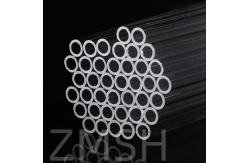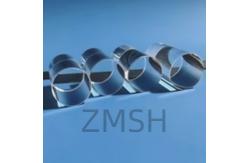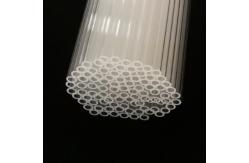Large ID Thin-Wall Fused Silica Capillary Tubes SiO2 Biomedical Semiconductor
|
|
Fused Silica Capillary Tubes SiO2 Ultra-Fine Biomedical Semiconductor
Introduction of Fused Silica Capillary Tubes SiO2Large bore, thin-wall fused silica capillary tubes are high-precision hollow glass structures made from amorphous silicon dioxide (SiO₂). Unlike standard fused silica tubes or micro-capillaries, these specialty tubes combine a large internal diameter (typically 1 mm to 10 mm or more) with an exceptionally thin wall (as low as 0.1 mm). This unique geometry offers minimal fluid resistance, reduced material weight, and enhanced optical clarity, while preserving the superior chemical and thermal stability of fused silica. These capillaries are used in high-throughput gas and liquid transfer, laser beam guidance, spectroscopic flow cells, plasma and vacuum transport systems, and other applications where both internal space and wall transparency are critical.
Manufacturing Principle Fused Silica Capillary Tubes SiO2
1. High-Purity Material SourceProduction begins with ultra-pure fused silica synthesized via flame hydrolysis or chemical vapor deposition (CVD), ensuring low metallic content and high UV-VIS transmission. 2. Precision Preform PreparationA large-diameter, thin-walled preform is prepared either by depositing layers of silica onto a rotating mandrel (FHD/CVD) or through mechanical boring of bulk silica glass. 3. Controlled Tube DrawingThe preform is heated in a clean high-temperature furnace (>2000°C) and carefully drawn into capillary tubes. To achieve thin walls with wide bores, engineers regulate:
4. Stress Relief and CleaningCapillaries are annealed at controlled temperatures to remove internal stress caused by thermal gradients. They are then cleaned using acid-based or ultra-pure water systems to remove particulate and ionic contamination. 5. Final ProcessingTubes may be laser-cut, beveled, or polished. Options include fire-polished ends for optical clarity, or chemically etched surfaces for microfluidic compatibility.
Frequently Asked Questions (FAQ) of Fused Silica Capillary Tubes SiO21. What is the difference between silica and fused silica?Silica typically refers to silicon dioxide (SiO₂) in general,
including crystalline forms like quartz and amorphous forms like
glass. 2. What are the advantages of fused silica capillary columns compared with glass or metal columns?Fused silica capillary columns offer several key benefits:
3. How do you cut fused silica?Fused silica is cut using a precision scoring and breaking method. The process involves:
4. What is a bare fused silica capillary?A bare fused silica capillary refers to a fused silica tube that has no internal coating or surface treatment. It is essentially raw, untreated fused silica tubing and is commonly used in:
Related products
Quartz Glass Window UV Fused Silica Optical Viewport Custom Size Coating Available
Fused Silica Capillary Tubes SiO2 Ultra-Fine Biomedical Semiconductor
|
| Product Tags: SiO2 Fused Silica Capillary Tube Biomedical Fused Silica Capillary Tube |
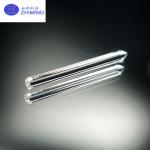
|
Precision Fabricated Sapphire Rod High Purity Single Crystal Sapphire Component |
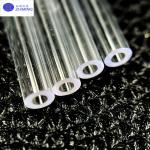
|
High Pressure Sapphire Capillary Tubes High Precision Hollow Microstructures Fabricated |
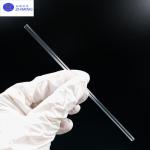
|
High Performance Sapphire Capillary Tubes Thermal Shock Resistance |
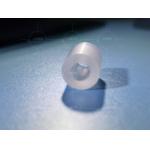
|
Dia 10mm Sapphire Components Polished Al2o3 Single Crystal Sapphire Drive Pipe |
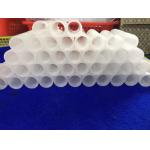
|
Polished Al2O3 Crystal Sapphire tube , Sapphire Cup Tube Pipe Industrial |
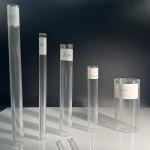
|
Single Crystal Al2O3 99.999 Sapphire Tubes Rods Optical Grade Sapphire Windows |

